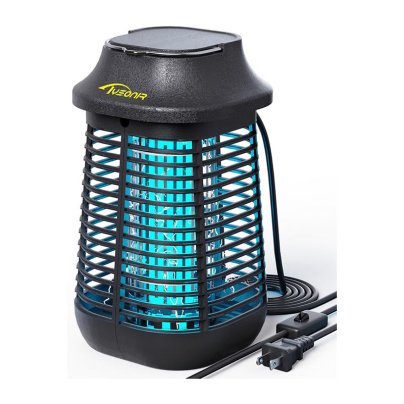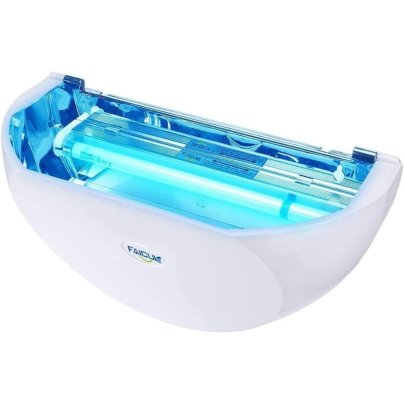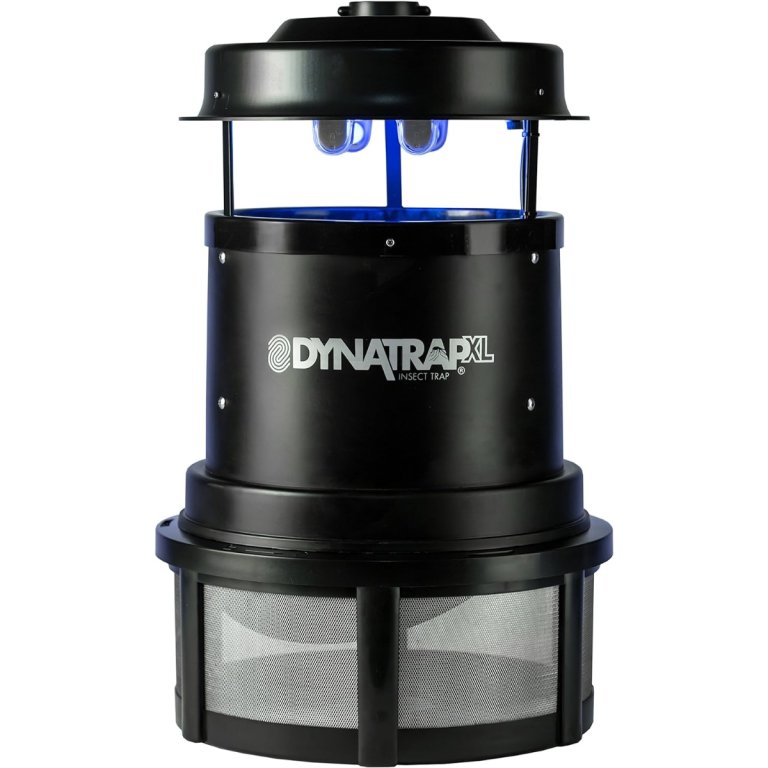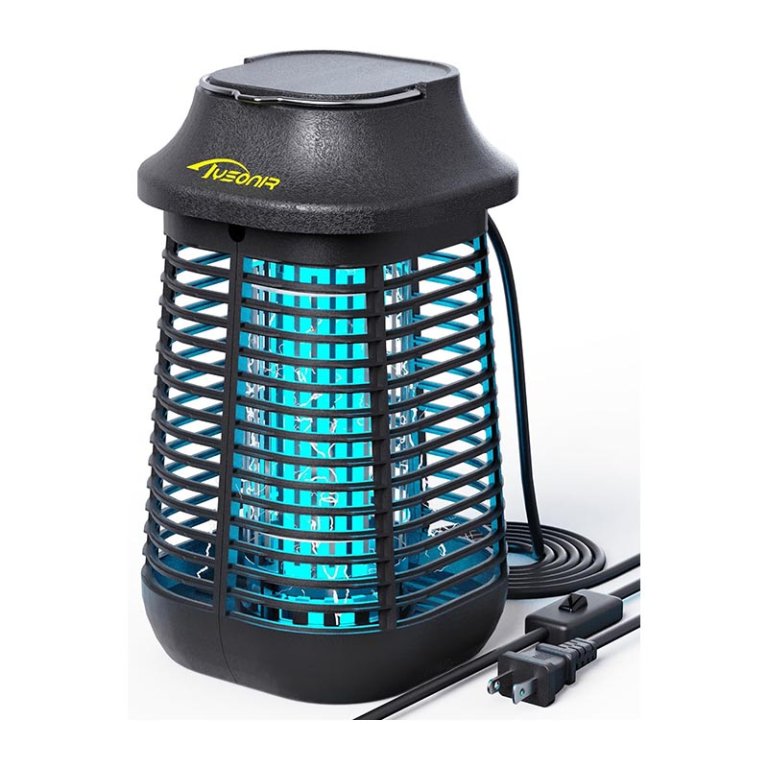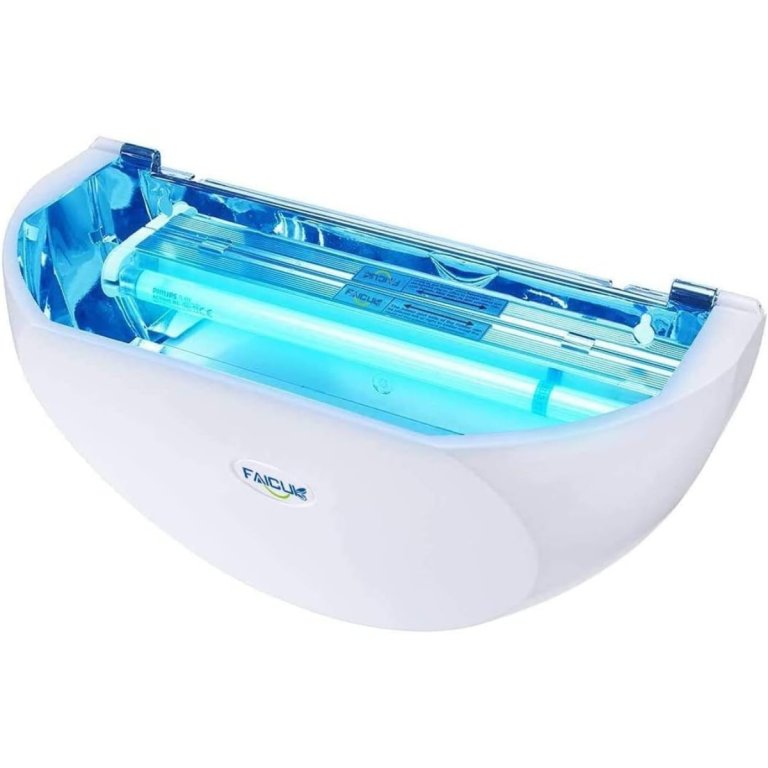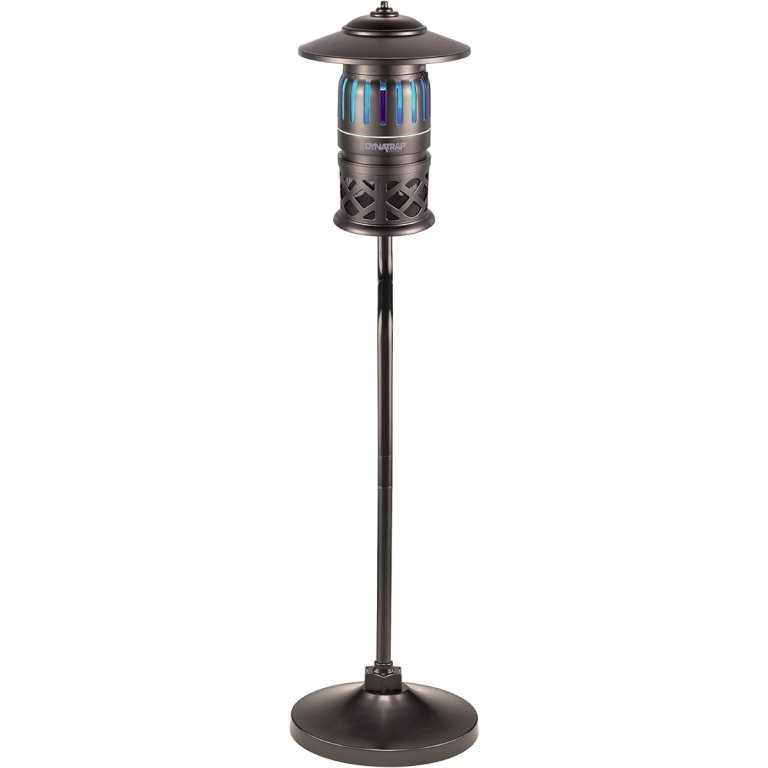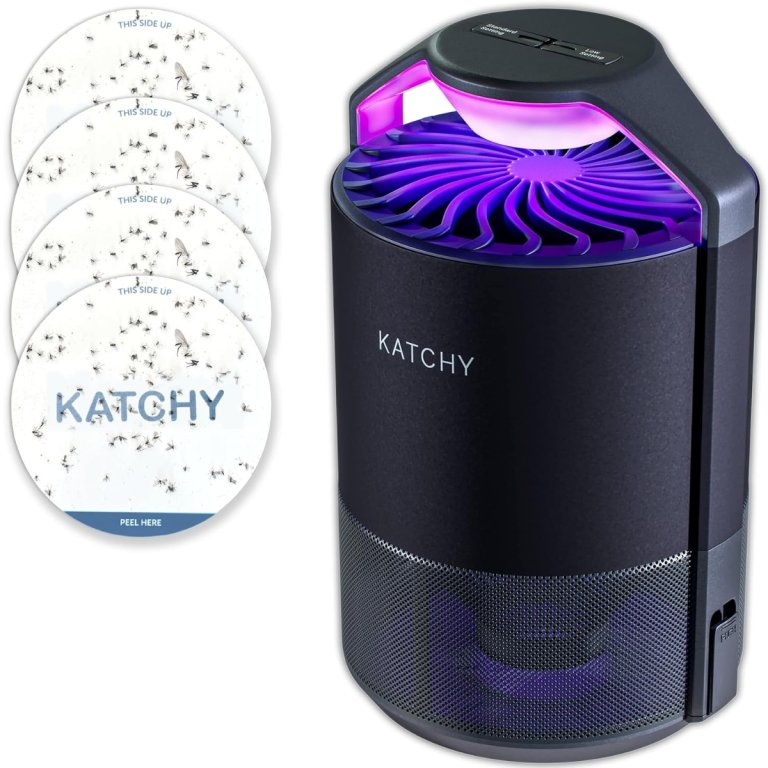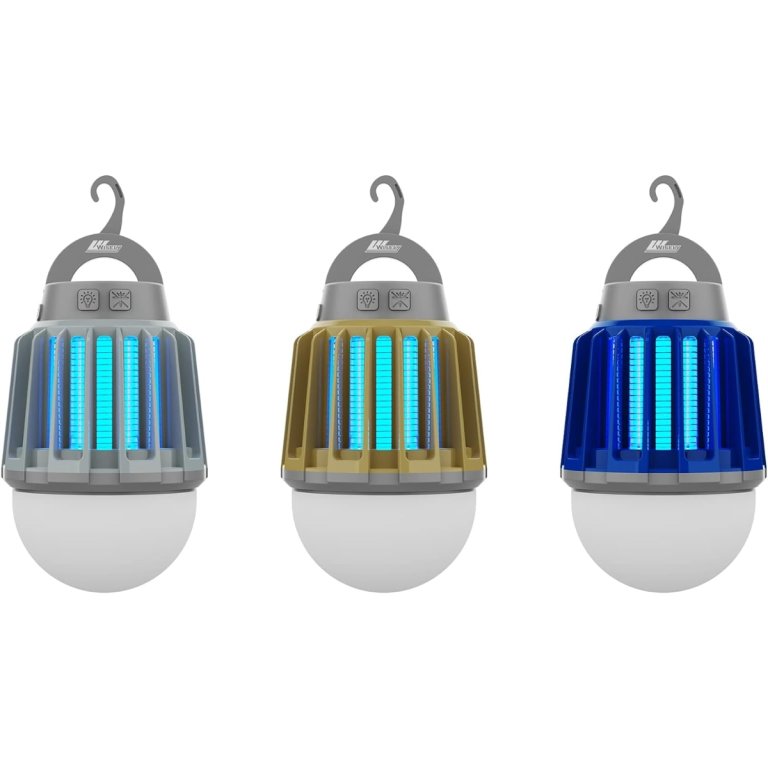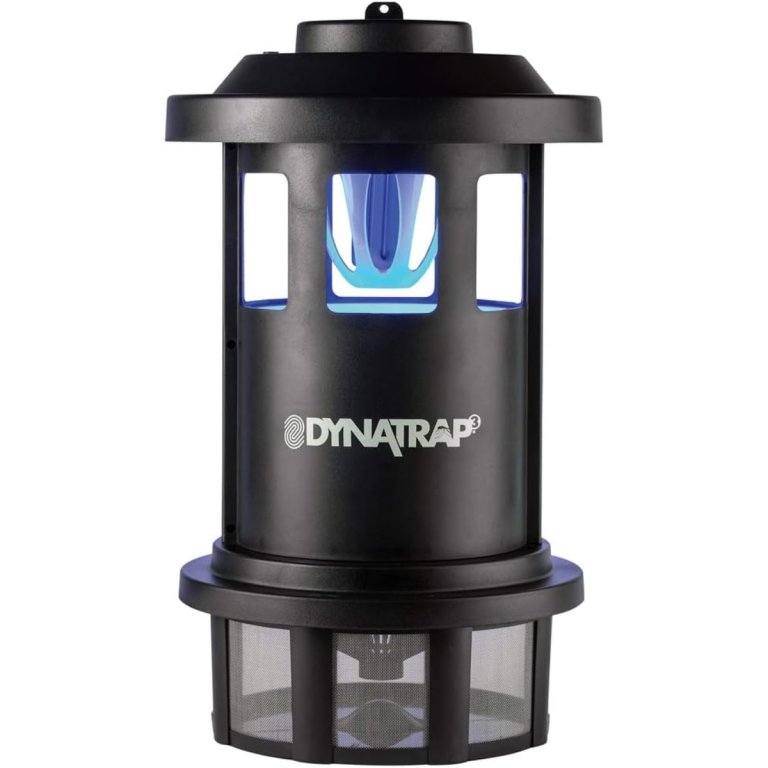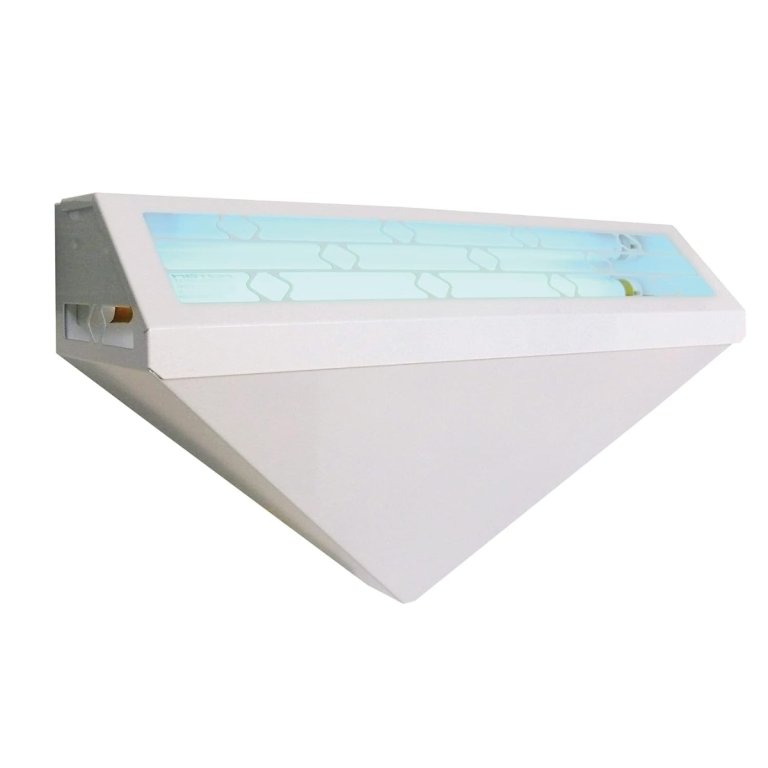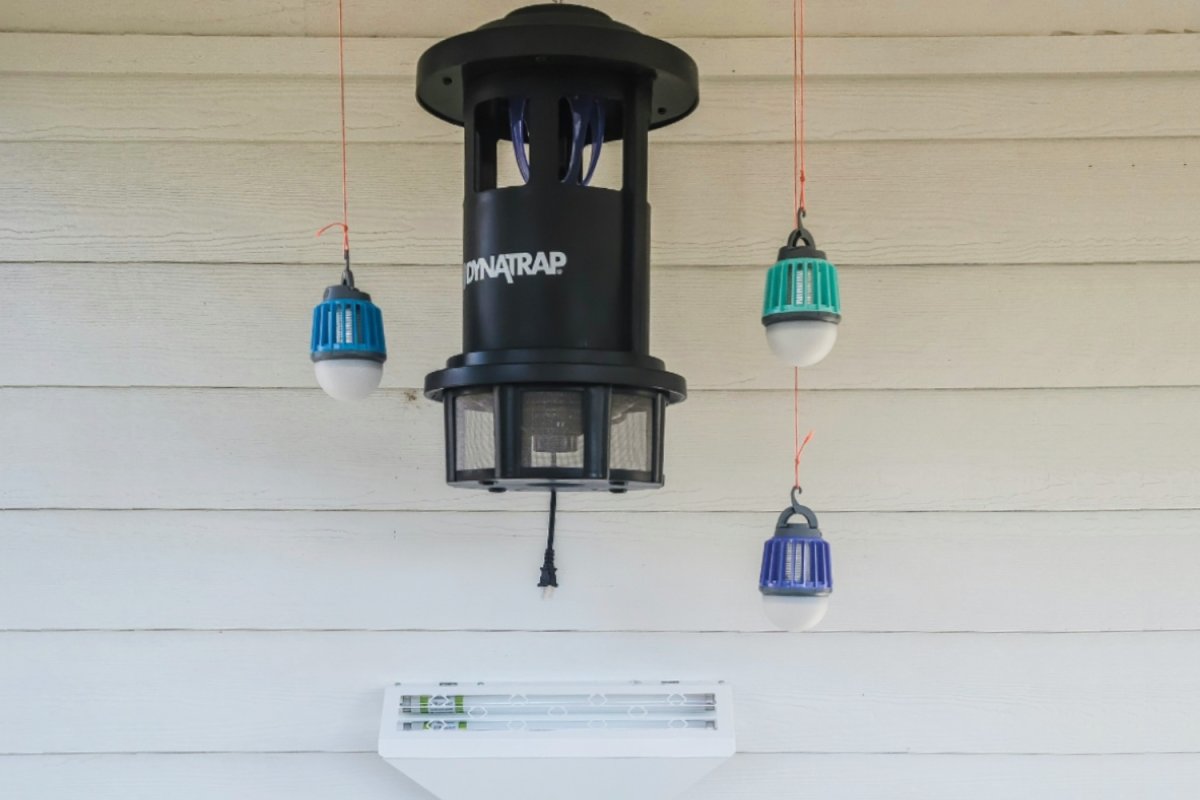
We may earn revenue from the products available on this page and participate in affiliate programs. Learn More ›
Utilizing a mosquito trap to take control of the mosquito population on your property isn’t just about comfort—it’s also about health. These relentless pests not only cause irritating skin reactions and itching but also pose a serious threat by transmitting diseases such as malaria, West Nile virus, and Zika virus.
According to Kyle Boureston, founder of MosGone, a mosquito control company based in Austin, Texas, “mosquito traps are the only truly effective way to control the mosquito population. Repellents and insecticides will kill almost anything they come into contact with while being sprayed, such as pollinators like bees and butterflies, and generally lose their efficacy shortly after being sprayed.”
To help get rid of mosquitoes and ensure your outdoor comfort and safety, we conducted comprehensive testing on the top-selling mosquito traps. Our top recommendation is the DynaTrap thanks to its easy setup, robust construction, and quiet operation. Learn what to look for when shopping for one of these helpful traps, and find out how the following models earned a spot on our lineup of the best mosquito traps.
- BEST OVERALL: DynaTrap 1-Acre Mosquito and Insect Trap
↓ Jump to Review - BEST BANG FOR THE BUCK: Tysonir Electric Bug Zapper
↓ Jump to Review - BEST WALL-MOUNTED: Faicuk Wall Sconce Fly Light Trap
↓ Jump to Review - BEST FOR OUTDOORS: DynaTrap ½-Acre Decora Pole-Mounted Mosquito Trap
↓ Jump to Review - BEST FOR INDOORS: Katchy Indoor Insect Trap
↓ Jump to Review - BEST PORTABLE: Wisely Rechargeable Camping Zapper With Lantern
↓ Jump to Review - BEST FOR MIDSIZE YARDS: DynaTrap ¾-Acre Mosquito & Insect Trap
↓ Jump to Review - BEST SCONCE DESIGN: Gardner WS-95 Wall Sconce Insect Light Trap
↓ Jump to Review
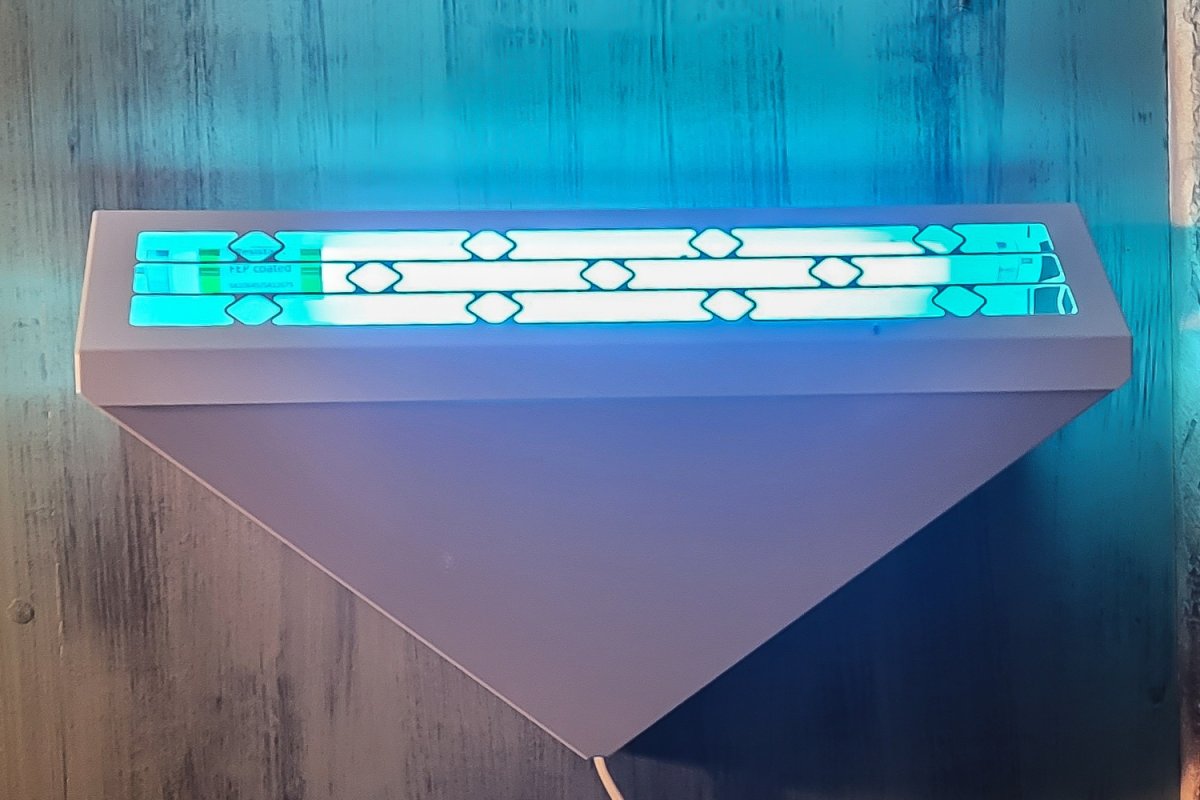
Mosquito Trap Comparison
| Product | Type | Indoor or Outdoor | Coverage Area |
|---|---|---|---|
| DynaTrap 1-Acre Mosquito and Insect Trap | UV light and carbon dioxide | Both | 1 acre |
| Tysonir Electric Bug Zapper | UV light | Both | 2,000 square feet |
| Faicuk Wall Sconce Fly Light Trap | UV light and glue board | Indoor | 900 square feet |
| DynaTrap ½-Acre Decora Pole-Mounted Mosquito Trap | UV light and carbon dioxide | Both | ½ acre |
| Katchy Indoor Insect Trap | UV light and glue board | Indoor | 320 square feet |
| Wisely Rechargeable Camping Zapper With Lantern | UV light and zapper | Both | Approximately 15-foot radius when 3 traps are used |
| DynaTrap ¾-Acre Mosquito & Insect Trap | UV light and carbon dioxide | Both | ¾ acre |
| Gardner WS-95 Wall Sconce Insect Light Trap | UV light and glue board | Indoor | 1,800 square feet |
Our Top Picks
Although there are a wide variety of mosquito traps to choose from, the list below zeroes in on some of the best-rated picks across trap types. We put these traps to the test. Find out how each one fared.
Best Overall
DynaTrap 1-Acre Mosquito and Insect Trap
What We Like
- Easy to set up
- Removable base is easy to clean
- Whisper-quiet fan traps insects without zapping or buzzing
What We Don’t Like
- Kills indiscriminately—even pollinators such as honey bees
Specs
- Type: UV light and carbon dioxide
- Indoor or outdoor: Both
- Coverage area: 1 acre
Our Ratings: Ease of Use 5/5; Effectiveness 5/5; Durability 5/5; Ease of Cleaning 5/5; Value 4.5/5
The DynaTrap 1-acre mosquito and insect trap can reduce mosquito populations on properties of up to 1 acre in size. It plugs into a standard 110-volt (V) electrical outlet and operates quietly 24 hours a day. Carbon dioxide emanates from the titanium dioxide surface, along with the off-gassing of organic matter inside the collection chamber. Warmth and ultraviolet light from two bulbs attract mosquitoes to the upper housing. A quiet fan pulls the insects into the metal retaining cage, where they dry out and die without the sounds of zapping or buzzing. It’s easy to maintain, too: Simply twist off the retaining cage and empty its contents.
According to the manufacturer, with constant operation, the DynaTrap takes 3 weeks to capture enough mosquitoes to notice an impact. It can take up to 6 weeks to kill enough mosquitoes to disrupt the mosquito breeding cycle.
We set up the trap in a covered porch area in our backyard and let it run continuously for 6 weeks per the manufacturer’s recommendation. The only con we had for this trap is that it kills all flying insects—even the beneficial ones like native bees and ladybugs. However, it did make an impact on the mosquito population in our yard.
What our tester says: “The DynaTrap insect trap effectively lured mosquitoes and other flying insects in testing… It’s easy to set up and clean, and the fan is barely noticeable while it’s running.”–Debbie Wolfe, Product Reviews tester and writer
Editor’s Note: We originally tested this model in 2023. Since then, DynaTrap has released a new version with the same coverage, DynaTrap DT2030, which we’ll test soon.
Get the DynaTrap 1-acre mosquito trap at Amazon or Ace Hardware.
Best Bang for the Buck
Tysonir Electric Bug Zapper
What We Like
- Features a convenient hook on top for hanging
- Lightweight at just 2 pounds for easy portability
- Waterproof construction makes it easy to clean
What We Don’t Like
- No power switch; must unplug to power off
- Zapping sound is very loud
Specs
- Type: UV light
- Indoor or outdoor: Both
- Coverage area: 2,000 square feet
Our Ratings: Ease of Use 5/5; Effectiveness 4/5; Durability 5/5; Ease of Cleaning 5/5; Value 5/5
The Tysonir Electric Bug Zapper uses heat and ultraviolet light from its 15-watt Blu-ray bulb to attract mosquitoes and a variety of other bugs. Its 4,200V electric shock grid, which is surrounded by a protective ABS plastic housing, quickly kills bugs. This unit plugs into a standard 110V household power outlet. It’s rated for both indoor and outdoor use in all kinds of weather. Users can hang the lantern-style housing by the metal loop or set it on a solid surface. For a quick cleanup, users simply unscrew the threaded base.
Using this mosquito zapper is as easy as plug-and-go. It’s simple and effective but best used in a dark room or an unlit outdoor area. Although this trap did kill any insect that had the misfortune of being lured into its electric grid, we did have two cons. First, there is no power button. You have to plug and unplug the machine from the wall outlet. Second, the zapping sound is loud. For some people, this may be insurance that it’s working, but it startled us almost every time we heard the zap.
Nonetheless, for the economical price and easy portability, the Tysonir Electric Bug Zapper is handy as a backup unit or as an extra bug zapper to take to the cabin or use in an RV.
Get the Tysonir mosquito trap at Amazon.
Best Wall-Mounted
Faicuk Wall Sconce Fly Light Trap
What We Like
- Compact, mountable unit
- Runs quietly; doesn’t disrupt a home’s day-to-day routine
- Easy to clean and install
What We Don’t Like
- Plastic casing is flimsy
Specs
- Type: UV light and glue board
- Indoor or outdoor: Indoor
- Coverage area: 900 square feet
Our Ratings: Ease of Use 5/5; Effectiveness 5/5; Durability 4/5; Ease of Cleaning 5/5; Value 3.5/5
Designed to trap mosquitoes indoors, the Faicuk trap attracts mosquitoes and other flying insects with an 8-watt ultraviolet lamp. The trap’s reflective inner surface boosts the light’s intensity. It has a 6-foot power cord that plugs into a standard 115V household electrical outlet, and it operates quietly with no buzzing, zapping, or fan noise. The glue board collection system captures bugs efficiently, and it’s easy to replace when needed. (The unit comes with six replacement glue boards.) It covers about 900 square feet or a 25-foot radius.
We did have mixed feelings about this bug trap. As a trap, it worked well; it lured a variety of flying insects and effectively eliminated them. Cleanup was easy, and replacing the sticky paper was a cinch. The issues we had with this product were that the plastic is flimsy, the unit is unattractive (to us), and it’s expensive. Aesthetically, it would work in some settings. Still, you will need to have a power outlet near it to power it without using extension cords. Price is relative, but we thought the cost of this bug trap seemed high given that you can only use it indoors, and its coverage area is small. Nonetheless, we still felt that it would be a beneficial product, especially for restaurants or covered-patio eating areas needing a bug trap that doesn’t take up valuable floor space.
Get the Faicuk mosquito trap at Amazon.
Best for Outdoors
DynaTrap ½-Acre Decora Pole-Mounted Mosquito Trap
What We Like
- Durable construction can withstand weather and heavy winds
- Attractive design looks great with multiple outdoor fixtures
- Easy to clean and resists weathering
What We Don’t Like
- Cumbersome to assemble
- Kills indiscriminately—even desirable pollinators such as honey bees
Specs
- Type: UV light and carbon dioxide
- Indoor or outdoor: Both
- Coverage area: ½ acre
Our Ratings: Ease of Use 5/5; Effectiveness 5/5; Durability 5/5; Ease of Cleaning 5/5; Value 5/5
The DynaTrap pole-mounted mosquito trap uses light, heat, and carbon dioxide to attract mosquitoes from up to ½ acre away. It plugs into a standard 110V household electrical outlet and operates quietly. The titanium dioxide surface releases a carbon dioxide plume that attracts mosquitoes and emits warmth and ultraviolet light from two bulbs in the upper housing. A quiet fan draws nearby bugs into the metal retaining cage, where they dehydrate and die without the sound of noisy electrical zapping or buzzing. The capture basket twists off for easy cleaning. This freestanding mosquito trap is 44 inches high when mounted on the included lantern pole.
After allowing the DynaTrap pole-mounted mosquito trap to run for 4 weeks, we did notice a reduction in mosquitoes and other flying insects. According to the manufacturer, disrupting the mosquito breeding cycle takes about 6 weeks, so we were pleasantly surprised. Overall, we did like the way the trap looked and performed. The trap’s fan is quiet while in operation, and there is no annoying zapping sound when a bug enters the fan area. The only cons we can report are that it’s cumbersome to assemble and it also lures and kills any flying insect, including beneficial bugs and pollinators. Still, once it’s together, it’s easy to operate and clean.
Editor’s note: The pole-mounted version that we tested is no longer available, but DynaTrap still offers the decora-style trap (without the pole) in sleek black and tungsten finishes.
Get the DynaTrap ½-acre mosquito trap at Amazon or The Home Depot.
Best for Indoors
Katchy Indoor Insect Trap
What We Like
- Quick set up; simply plug in
- Easy to clean
- Catches gnats, fruit flies, and mosquitoes
What We Don’t Like
- Some users feel the fan isn’t strong enough
Specs
- Type: UV light and glue board
- Indoor or outdoor: Indoor
- Coverage area: 320 square feet
Our Ratings: Ease of Use 5/5; Effectiveness 5/5; Durability 5/5; Ease of Cleaning 5/5; Value 4.5/5
The Katchy Indoor Insect Trap uses UV light to attract mosquitoes and other insects. When the trap is placed near the source of the insects (a trash bin, for example), its quiet fan draws the bugs into the capture basket and onto a sticky glue board. Run this unit day and night, and you should see fewer bugs in a couple of days. Both the light and fan are powered by a USB cable that plugs into a wall adapter or a portable USB power source. This electric mosquito trap is also compatible with scent attractants.
We loved how well this inside mosquito catcher captured annoying fungus gnats and fruit flies. We did not think we had issues with mosquitoes indoors until we ran this machine for a whole week. We checked the trap daily and were amazed by the number of bugs stuck to the glue paper, including several mosquitoes! We do think the trap is a bit spendy. It only comes with four glue boards, and its coverage area is 320 square feet. Refill glue boards are available. However, it works well and will help eliminate fruit flies, gnats, and mosquitoes that invade your home.
Get the Katchy mosquito trap at Amazon or Walmart.
Best Portable
Wisely Rechargeable Camping Zapper With Lantern
What We Like
- Rechargeable via USB-C
- Compact and portable, making them suitable for camping
- Includes adjustable LED light
What We Don’t Like
- Small coverage area
Specs
- Type: UV light and zapper
- Indoor or outdoor: Both
- Coverage area: Approximately 15-foot radius when 3 traps are used
Our Ratings: Ease of Use 5/5; Effectiveness 3.8/5; Durability 5/5; Ease of Cleaning 5/5; Value 4/5
The Wisely three-pack of compact mosquito traps exceeded our expectations. The convenience of charging them via USB cords was a notable advantage. It took approximately 45 minutes to fully charge each trap, and the indicator lights changed from red to green to indicate when they were ready to use.
Unlike traditional traps, these mosquito killers do not have a catch basin. Instead, the dead mosquitoes land on a narrow interior rim or fall to the ground. Each unit has a UV light and an adjustable LED light. We found the LED lights to be quite bright, attracting many moths when turned on. We preferred using only the UV lights, which proved sufficient for attracting and zapping mosquitoes. Depending on the desired setup, the traps can be conveniently hung or placed on a table.
The Wisely bug zappers for mosquitoes are portable and convenient. The UV lights effectively attract and eliminate mosquitoes within close proximity. Though coverage is not specified by the manufacturer, we estimated that when we hung the three zappers in close proximity (about 2 to 3 feet apart) they attracted mosquitoes up to about 15 feet away. Using just one zapper by itself may not have quite as much range.
The optional LED lights also provide additional illumination but may attract non-target insects, such as moths. With their versatility and effectiveness in keeping mosquitoes away in specific areas, these traps are valuable for mosquito control indoors or outdoors.
What our tester says: “While these traps are ideal for camping, I decided to test them by hanging all three units from the underside of a large patio umbrella. I sat at the table during peak mosquito activity periods—just before dawn and dusk—and observed several annoying pests drawn to the Wisely lights that were promptly zapped.”–Glenda Taylor, Product Reviews tester and writer
Get the Wisely portable mosquito traps at Amazon, The Home Depot, or Walmart.
Best for Midsize Yards
DynaTrap ¾-Acre Mosquito & Insect Trap
What We Like
- All-weather construction ensures durability
- Powerful yet whisper-quiet vacuum fan captures mosquitoes
- Covers an area up to ¾ acre
What We Don’t Like
- Doesn’t kill insects, only traps them
Specs
- Type: UV light and carbon dioxide
- Indoor or outdoor: Both
- Coverage area: ¾ acre
Our Ratings: Ease of Use 5/5; Effectiveness 3.5/5; Durability 5/5; Ease of Cleaning 4/5; Value 4/5
Read our full review: DynaTrap ¾-Acre Mosquito & Insect Trap
In hands-on testing, the DynaTrap ¾-acre trap proved to be a versatile and efficient solution for controlling flying insects. Setting up the trap was a breeze as it only required attaching the bug-catch basket, which securely twists onto the bottom. We hung it on our garage eave and used an exterior-rated extension cord since there was no nearby outlet. During the testing phase, we inspected the bug-catch basin every morning, emptying its contents.
Although we did notice a slight decrease in the outdoor mosquito population in our yard, the trap primarily captured a substantial number of moths rather than mosquitoes. The trap employs heat, light, and carbon dioxide to entice flying insects from a range of up to ¾ acre—pulling them into the catch basket via a quiet vacuum fan.
One drawback we encountered was that this outdoor mosquito trap did not kill the captured bugs. When we emptied the basket, many of the insects were still alive. The live insects would fly away, sometimes enveloping us in a swarm of bugs. Eventually, we resorted to spraying the basket with a bug killer before removing it, effectively preventing their escape.
According to the manufacturer’s specifications, the DynaTrap offers a comprehensive solution for trapping flying insects, including mosquitoes, biting flies, house flies, moths, June beetles, wasps, yellow jackets, stink bugs, gnats, and more. The trap is suitable for both indoor and outdoor use, although we opted to test it outdoors, where the mosquitoes were present.
Editor’s note: Dynatrap no longer offers the model we tested, but the DT1775 has very similar specifications, and we anticipate similar performance. We’ll find out for sure when we test soon.
Get the DynaTrap ¾-acre mosquito trap at Amazon, The Home Depot, or Walmart.
Best Sconce Design
Gardner WS-95 Wall Sconce Insect Light Trap
What We Like
- Reliable and effective 24-hour nonchemical trapping
- Completely quiet and attractive design
- Effective on up to 1,800 square feet
What We Don’t Like
- Only 1 sticky catch board comes with purchase
Specs
- Type: UV light and glue board
- Indoor or outdoor: Indoor
- Coverage area: 1,800 square feet
Our Ratings: Ease of Use 5/5; Effectiveness 5/5; Durability 4/5; Ease of Cleaning 5/5; Value 4/5
The Gardner WS-95 offers a reliable and straightforward solution for capturing flying insects without emitting carbon dioxide (CO2) indoors. We appreciated this aspect, as we prefer not to use CO2 traps indoors.
Setting up the trap was effortless. We hung it on a wall, inserted the included catch board, and patiently awaited the results. However, after 24 hours, we found only one tiny dead gnat lying on the glue board, despite noticing multiple mosquitoes and flies hovering around the trap.
Perplexed, we realized that we had forgotten to peel off the protective paper that revealed the sticky side of the board. Once we rectified this user error, the trap started capturing a significantly higher number of flying insects. This trap operates without an annoying zapper. The intense UV light attracts nearby insects, and upon entering the open-weave top, they encounter the glue board and get trapped.
Aside from its functionality, the Gardner sconce boasts an attractive design, and we installed it on a kitchen wall, where insects tend to gather. However, there are a couple of downsides to consider. First, there is no shut-off switch, requiring the trap to be plugged in to turn on and unplugged to turn off. Second, the trap comes with only one sticky board. Additional boards must be purchased separately. The manufacturer recommends changing the glue board monthly and replacing the UV light annually.
Overall, the Gardner WS-95 is a powerful and user-friendly trap for controlling flying insects indoors.
Get the Gardner mosquito trap at Amazon or Walmart.
Jump to Our Top Picks
How We Tested the Best Mosquito Traps
| Testing Stats | |
| Products tested | 8 |
| Time spent testing | 6 weeks |
| Tests performed | 5 to 6 |
| Price range | $25 to $200 |
We evaluated each mosquito trap based on established criteria, including ease of setup and cleaning, insect attraction effectiveness, durability, and ability to maintain an insect-free area. We assigned ratings on a rubric scale of 1 to 5 to determine their scores. The better a mosquito trap performed, the more points it received.
We strategically placed each trap in the recommended area, following the manufacturer’s guidelines. Additionally, we followed the manufacturer’s suggested time frame for optimal results during our testing phase. After each trap had completed its designated operating time, we carefully assessed how well the devices attracted and eliminated the targeted insects. Lastly, we thoroughly examined each trap’s performance in maintaining an insect-free environment when operated continuously.
| Product | Ease of Use | Effectiveness | Durability | Ease of Cleaning | Value |
| DynaTrap 1-Acre Mosquito and Insect Trap | 5/5 | 5/5 | 5/5 | 5/5 | 4.5/5 |
| Tysonir Electric Bug Zapper | 5/5 | 4/5 | 5/5 | 5/5 | 5/5 |
| Faicuk Wall Sconce Fly Light Trap | 5/5 | 5/5 | 4/5 | 5/5 | 3.5/5 |
| DynaTrap ½-Acre Decora Pole-Mounted Mosquito Trap | 5/5 | 5/5 | 5/5 | 5/5 | 5/5 |
| Katchy Indoor Insect Trap | 5/5 | 5/5 | 5/5 | 5/5 | 4.5/5 |
| Wisely Rechargeable Camping Zapper With Lantern | 5/5 | 3.8/5 | 5/5 | 5/5 | 4/5 |
| DynaTrap ¾-Acre Mosquito & Insect Trap | 5/5 | 3.5/5 | 5/5 | 4/5 | 4/5 |
| Gardner WS-95 Wall Sconce Insect Light Trap | 5/5 | 5/5 | 4/5 | 5/5 | 4/5 |
What to Consider When Choosing a Mosquito Trap
Whether your mosquito problem is indoors or out, in a large area or a small one, appropriate bug traps are available to help you achieve and maintain a pest-free home and yard. Keep reading to learn more about the criteria used to select the best mosquito traps for different situations.
Types of Mosquito Traps
Mosquitoes are attracted to the carbon dioxide that humans and animals exhale and the body heat that’s produced. A mosquito trap uses several different ways to mimic the presence of a large, warm-blooded creature to attract and capture mosquitoes.
Heat
Mosquitoes are also attracted to the heat that emanates from humans and other warm-blooded animals. An effective trap produces a thermal heat plume that mimics the presence of an animal. When a mosquito gets close, the trap’s intake fan pulls it in.
Ultraviolet Light
Many plug-in mosquito traps feature compact fluorescent or LED ultraviolet (UV) lighting. Unlike other insects, mosquitoes are not attracted to UV light alone. However, UV light enhances the effects of heat and carbon dioxide in a mosquito trap. Traps with UV lights are usually more effective than those without them.
Propane
Propane-powered mosquito traps are portable, and they produce both heat and carbon dioxide. When propane is burned, it gives off carbon dioxide. Because humans and animals exhale mostly carbon dioxide when they breathe, the hungry mosquitoes approach the propane-powered trap because they think they’re hot on the trail of a warm-blooded creature. When mosquitoes come close to the trap, they’re drawn into the collection chamber by the trap’s fans. These propane-powered devices are portable and self-contained, but they’re usually more expensive than electric mosquito traps.
Carbon Dioxide
To a mosquito, the presence of carbon dioxide is the primary clue that a meal is nearby. Some mosquito traps use plumes of carbon dioxide, whether it’s exhaust from burning propane or a compressed gas cylinder, to attract the insects. The plumes mimic a human’s exhaled breath, which attracts blood-feeding mosquitoes looking for a meal.
Water
Standing water is a breeding habitat, and it should be eliminated in the landscape whenever possible. However, water can also serve as a trap for mosquitoes. Add Mosquito Bits to birdbaths, landscape ponds, and other water features. It’s a natural larvicide that kills mosquito larvae, but it’s safe for people, pets, frogs, fish, and other aquatic animals.
Paper
Although mosquitoes stick to sticky yellow fly trap paper, it’s not an effective mosquito trap. Glue boards, on the other hand, are an integral part of many mosquito traps. Essentially, a glue board is a piece of cardboard with adhesive on one side. When a mosquito is lured into a trap’s intake area, a fan sucks it into a collection chamber, where it crashes into a glue board and sticks to it.
Purpose
Mosquito traps cannot guarantee that the mosquitoes won’t bite. While using a mosquito repellent is often the most effective way to shield yourself from mosquito bites, incorporating a mosquito zapper, bug trap, or mosquito repellent machine into your defense strategy can add a reliable extra layer of protection. A trap is most effective when used as part of a broader mosquito control program that includes habitat modification, physical barriers like window screens and clothing, insect repellents, and more.
Before buying a mosquito trap, understand how it functions and its limitations. Ask these kinds of questions: How does the trap collect mosquitoes? How much area does it cover? How is it powered? Be sure to follow the manufacturer’s directions for setup and maintenance. Indoor mosquito traps may be ineffective for outdoor use, and outdoor traps placed in the wrong location may even make your mosquito problem worse.
Types of Mosquitoes
According to the Centers for Disease Control and Prevention (CDC), there are more than 200 types of mosquitoes in the continental U.S. and U.S. territories. Each species acts on a unique set of visual, thermal, and scent cues to seek and find a blood meal. For this reason, different traps are designed to appeal to different mosquito species, but the reasons are not entirely clear. Though these devices are capable of capturing a variety of mosquitoes, trap manufacturers rarely provide data on the success of their traps in attracting and eliminating specific species.
Indoor vs. Outdoor Use
Outdoor traps use carbon dioxide and heat—and sometimes light—to attract mosquitoes. Some traps also use scents meant to mimic human scent. Many outdoor mosquito traps capture a large quantity of insects inside a screened chamber where they dehydrate and die.
Indoor mosquito traps rely primarily on heat and light to attract bugs. A high level of indoor carbon dioxide is unhealthy, and the chemical odors some outdoor traps emit would be unbearable in a closed environment. Instead of a holding chamber filled with thousands of insect carcasses, most indoor traps contain the insects on sticky glue boards that can be replaced quickly, cleanly, and easily.
Longevity
Weather conditions notwithstanding, the longevity of a mosquito trap depends on the type of trap and the components of the trap. LED UV lights can last for approximately 3,000 hours, or 4 months of continuous use, while glue boards for indoor traps can last up to 30 days before becoming full.
The length of time a propane mosquito trap can run has everything to do with the size of the propane cylinder. A small tank of propane (the size that attaches to a gas grill) can run a propane mosquito trap around the clock for about 3 weeks. Every time you refill the propane tank, remember to stay abreast of the other aspects of an outdoor trap’s maintenance, such as replacing scent attractants, emptying the collection chamber, and cleaning the vents.
Ease of Use
An electric mosquito trap is easy to set up and use: Just plug it in and turn it on. As mentioned, it requires the regular replacement of glue boards, cleaning of collection chambers and vents, and the occasional replacement of UV bulbs. These tasks are simple and take just minutes to perform, and they are easy to remember because they happen at regular intervals.
Propane traps are easy to use on a day-to-day basis but require a bit more work to maintain. You might have to haul a heavy propane tank to the far corner of your property. Cleaning these traps can be more time-consuming as well because these larger devices attract more mosquitoes than their electric counterparts.
Portability
Some traps are designed to be set up and used in a single location. Wall units and some of the larger electric traps, for instance, must be positioned close to an electrical outlet. On the other hand, mosquito traps with USB adapters are easily moved around because they may be powered by a charger hub that is plugged into the wall or with a portable power pack. Solar mosquito zappers can be set up in any location with adequate sunlight, as they are powered by the sun’s rays and don’t require an electrical cord. Although their weight and bulk make them a bit more challenging to reposition on a whim, propane mosquito traps can be set up just about anywhere.
FAQ
Get the most out of your new mosquito trap. Read on to learn how to get rid of mosquitoes and find out more about owning, operating, and maintaining mosquito traps for the best possible results.
Mosquito traps will do a decent job of reducing numbers in the targeted area if installed properly. However, if you live in a particularly affected area (near standing water, for example), consider hiring a pest control professional.
Mosquito traps operate by replicating the presence of a mosquito host, such as a human or large animal. By doing so, they entice mosquitoes (and flies) into a clever trap, preventing them from biting people or spreading diseases. Mosquito traps use various attractants, such as warmth, carbon dioxide, and ultraviolet light, to draw in mosquitoes. Many of these traps also employ powerful fans to pull mosquitoes from the nearby air space into collection chambers. Inside the collection chamber, the mosquitoes are contained inside by the force of the fan’s air or a glue trap.
The best place for your mosquito trap will depend on your own situation. In general, though, placing them near standing water and in open spaces without too much obstruction, is an effective strategy.
Mosquito traps are safe for pets and humans when used as directed. However, there are other eco-friendly ways of ridding your yard of mosquitoes, such as building bat houses. Bats have a voracious appetite for mosquitoes and by giving them a place to call home, you may never have a mosquito problem again.
Traps are intended to attract mosquitoes, and they should be placed away from high-traffic areas. Mosquito traps are most effective when used as part of a broader mosquito control program, including the elimination of the mosquito breeding habitat in the adjacent landscape with the use of a mosquito yard spray or help from a pest control professional.
Propane-powered mosquito traps require fuel initially, and they must be refueled approximately every 3 weeks. Traps that use glue boards come with boards for the initial setup, but these boards must be replaced every month or so. Replace ultraviolet light bulbs about every 4 months.
This will depend on the type of trap you’re using and how big the mosquito problem is in your area. Large units can hold a lot of bugs and will only need emptying when it becomes full. When catching mosquitoes indoors with sticky paper traps, the paper traps may fill up more quickly and need to be replaced to maintain adequate protection.
Meet the Testers
Glenda Taylor is a product tester and writer specializing in the construction, remodeling, and real estate industries. She and her husband own a general contracting company, and Taylor is experienced in both residential and commercial building applications. She tests a wide range of power tools as well as other home improvement, household, and lawn-and-garden products.
Mark Wolfe is a writer and product tester with a background in the nursery and landscaping industry. For more than 20 years he mowed, edged, planted, pruned, cultivated, irrigated, and renovated beautiful landscapes. Now he tests and writes reviews about the latest outdoor power equipment, hand tools, lawn-care products, and other outdoor-living goods.
Debbie Wolfe is a photographer, author, and freelance writer in various niches. She has contributed hundreds of home, garden, and crafting articles and DIY tutorials for leading media outlets and retailers, including HGTV, Real Simple, Forbes Advisor, The Spruce, The Home Depot, Walmart, and Mother Earth News. She is the author of two DIY books: Do-It-Yourself Garden Projects and Crafts and Crafting with Herbs from Skyhorse Publishing. Her testing approach is straightforward and budget-minded.

